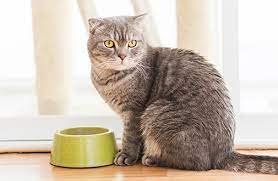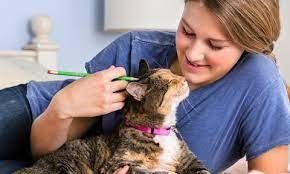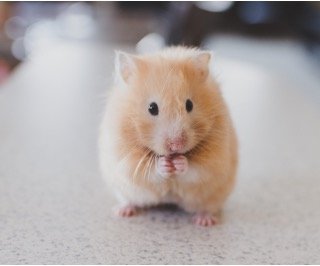A new cat or kitten owner will have many concerns about how to best provide for their furry companion. Cats, as you may know or soon learn, are endearing in many ways: they are entertaining, curious, intelligent, playful, independent, affectionate, and fun. Your cat is fortunate to have you as a pet parent because you’re researching cat care online.
Cats make great pets since they require little time and effort on your part. Assuming you’ve mastered the fundamentals of cat care (i.e., feeding, litter boxes, grooming, general health, and safety), all that’s left to do is love and cherish your feline friend.
In this manual, “cat” refers to both male and female felines equally.

It is important to note, however that Tomcats are the common name for male cats. The term “gib” is used to refer to a male cat that has been sterilised. Unaltered female cats are referred to as “queens.” Typically, female cats have a softer coat. You should “cat-proof” your house before bringing your cat or kitten inside. Because of their strong sense of territory, cats can feel anxious while visiting a new environment. That’s why it’s imperative to get rid of anything toxic.
Cat Feeding

You should feed your cat a nutritious diet since this will have a significant impact on his or her overall health. To ensure a smooth transition to the food you intend to feed your cat, it is best to first feed him a tiny bit of the brand of food he was eating before you adopted it. Kittens (less than a year old) need a higher-calorie diet for growth, thus feeding them kitten formula is the best option.
Ask your vet for advice on what to feed your cat if he or she is experiencing any health problems, is overweight or underweight, or is getting on in years. If, for instance, your cat needs to shed a few pounds for medical reasons, it’s best to do it gradually. Here’s a rundown of the basic categories of cat and kitten food sold at grocery stores and pet supply shops, assuming your pet is in good health.
Canned food
Wet food is another name for this type of meal. Canned food is a favorite of most feline species. Carefully reading the labels will help you choose canned goods with a higher percentage of meat. Typically, canned goods would seem like slices or chunks of meat swimming in a sea of gravy.
Dry food
Unlike wet foods, dry foods don’t go bad if left out for a while. This is particularly useful if your cat prefers to graze rather than sit down for set meals, as you could experience if feeding it solely canned or wet food.
You should feed your kitten both dry and wet food so that it becomes accustomed to both textures. Never overdo it with sweets. Beginner pet owners sometimes make the mistake of thinking they can bribe their pet into submission by showering it with treats. We recommend that sweets make up no more than 5–10% of your daily calorie intake.
How to play with your cat?

The needs of an indoor cat are different from those of a feral cat. Your cat needs to practice their natural behaviors of hunting and exploring. It is your responsibility as a pet parent to supply your cat with appropriate toys that will stimulate and develop these instincts. The following are examples of popular cat toys:
- Game involving food-related puzzle solving
- Cat scratching posts
- Invest in a cat tree so that your pet can climb and jump with ease.
- Packaging materials
- Round, plastic balls for rolling
- This cat tunnel, this cage ball, or this feather mouse are just a few examples of the many interactive toys that can be purchased online or at your local pet store.
Follow these steps when meeting your cat for the first time:
- Get on your knees and approach them from below.
- Display your palms to them, empty.
- If you know their name, use it gently.
Maintain this behavior till they accept you. Stay put and see if they’ll come to you. - In addition, it is common for new cats to retreat to their hiding place for a few days as they adjust to their new environment. You shouldn’t worry as long as they’re eating and using the bathroom normally.
Brush Your Cat Regularly

Tooth brushing is simple and quick to accomplish. Because it makes them feel calm, most cats appreciate being rubbed. It’s easy to keep a cat in good condition because they don’t shed much and don’t need frequent baths, but a good brushing once a week will remove any dirt or dead hair and help keep their skin healthy. Nonetheless, use caution when combing or brushing your cat. The occurrence of hairballs is thus decreased. Your cat’s coat will stay clean with just a once or twice weekly brushing. The exception to this rule is long-haired cats, which need to be brushed as often as once every two days because they shed their hair throughout the year.
Also, know How Long Do Bald Eagles Live?
Litter Box
For every cat you have, you’ll need at least one litter box. The norm is open-style boxes, which are favored by mine. Some cats may feel trapped in enclosed boxes, and some scents may be trapped inside as well.
The most important thing is that the box, of whatever type, is sufficiently big. Kittens don’t need anything bigger than a shoebox, but adult cats weighing more than about 11 pounds may find even the largest standard box uncomfortable. If necessary, go with the largest size.
Clay, clumping, pine pellet, grain, and recycled newspaper litter are just a few examples of the different types of litter available. Beginning with a standard clay litter is a safe bet if you’re undecided. This is the most affordable option, and most cats and kittens are already accustomed to it. Dust isn’t great for you or your pet, so try to find a type that has “low dust” or “no dust” in the name.

Pick a scoop appropriate for the litter you intend to use, as well as a small pail for storing the litter you scoop and dumping it as it becomes soiled. You may prevent litter from being tracked through the home by placing a mat under the box. Listed below are some potential hazards that should be avoided in order to avoid injuries:
- Elevated platforms
- Screen-free windows
- Any surface they could potentially ascend, knock over
- There are some flowers and plants that are dangerous to cats.
- Paper clips, rubber bands, twist ties, and strings are all examples of little things (choking hazards)
- The floor is covered with tablets and medicines that have been dropped or spilled.
- Some feline playthings.
- For obvious reasons, some playthings include warning labels that insist on being followed to the letter.
- When you’re not playing with your pet, put away any of these items. Mice toys and other little toys require extra caution.
Medications
Medication should be stored in its original container and placed out of your cat’s reach at all times. Keep in mind that he or she can easily leap onto the kitchen island and even enter the cabinets. Dropping a pill or spilling a drug on the floor might be lethal, so take extra precautions. Cats are more secure and healthier when kept inside.





